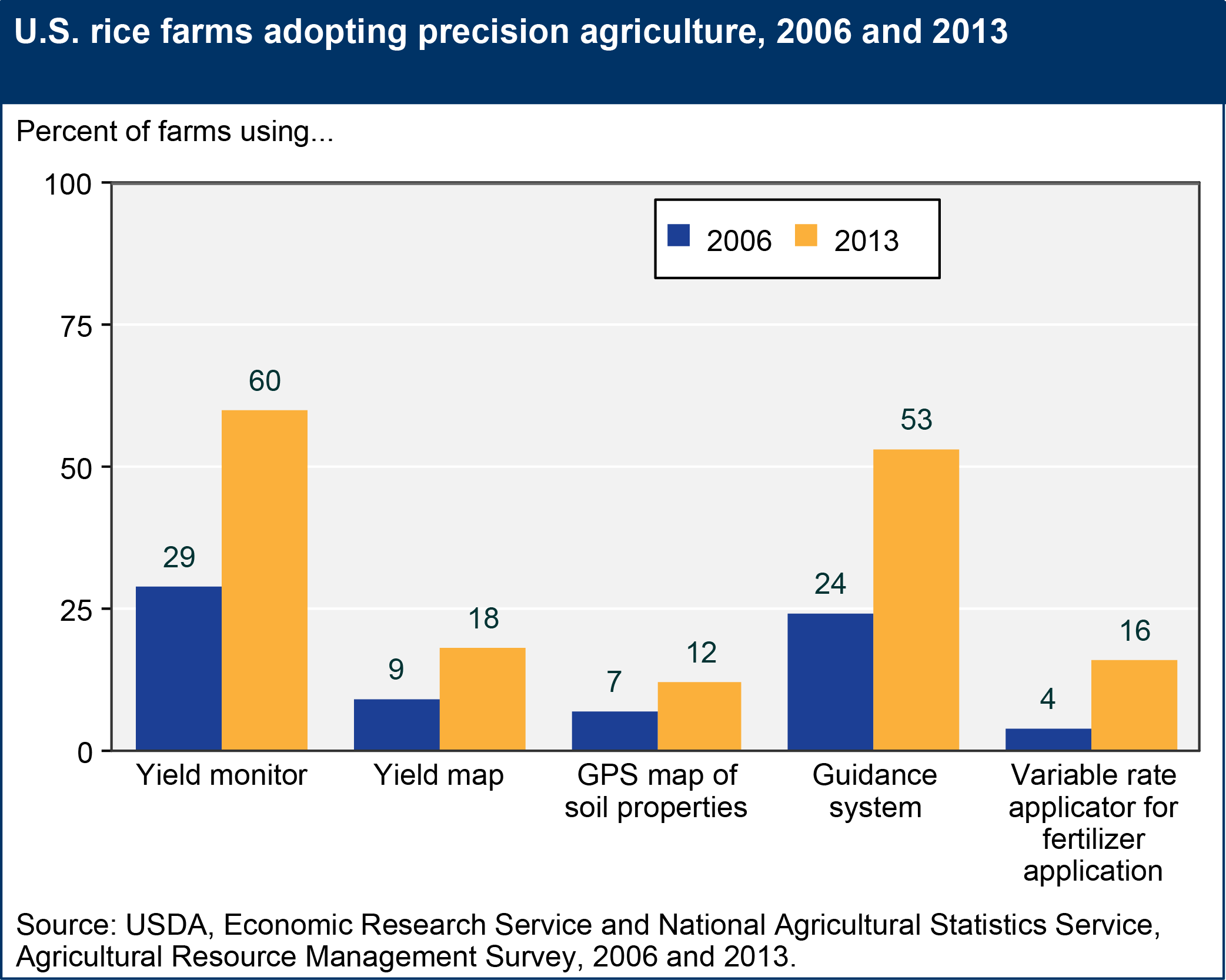Rice farms are adopting precision agriculture technologies
- by James M. MacDonald
- 3/25/2015

Precision agriculture refers to a set of practices used to manage fields by measuring variations in nutrient needs, soil qualities, and pest pressures. In 2013, USDA conducted the latest Agricultural Resource Management Survey (ARMS) of the U.S. rice industry, interviewing farmers about production practices, resource use, and finances in the 10 largest rice-producing States. Some technologies have been rapidly adopted; in particular, yield monitoring increased in use to 60 percent of farms between 2006 and 2013. Monitors can identify variations in yields within a field, allowing farmers to adjust inputs and practices accordingly. Auto-steer or guidance systems are now used on over half of all rice farms; these reduce stress on operators, and reduce errors in input application overlaps and seeding cut-off at the end rows. The cost savings from using these two technologies can also be accompanied by increases in yields. This chart is found in the joint ERS/National Agricultural Statistics Service (NASS) report, 2013 ARMS—Rice Industry Highlights, based on ARMS Farm Financial and Crop Production Practices data.


